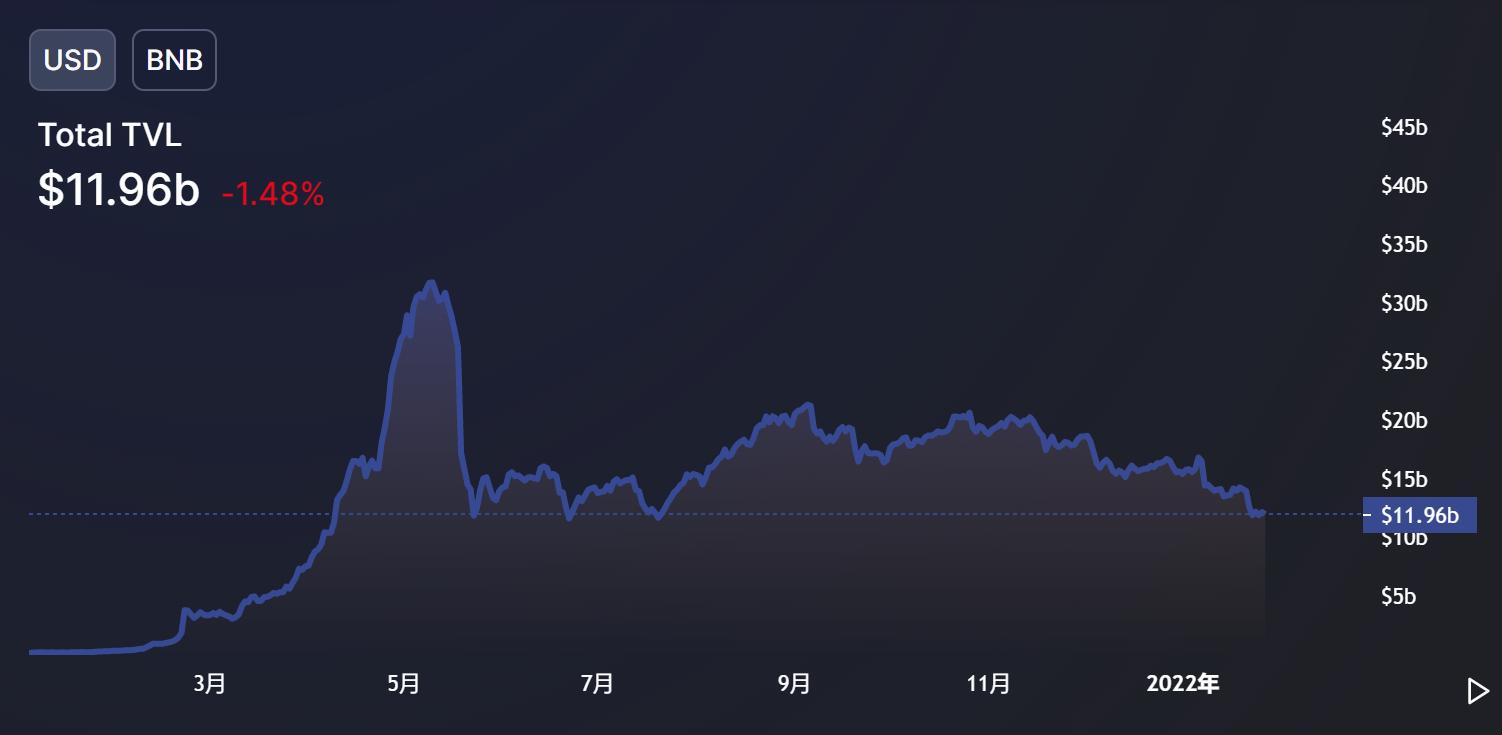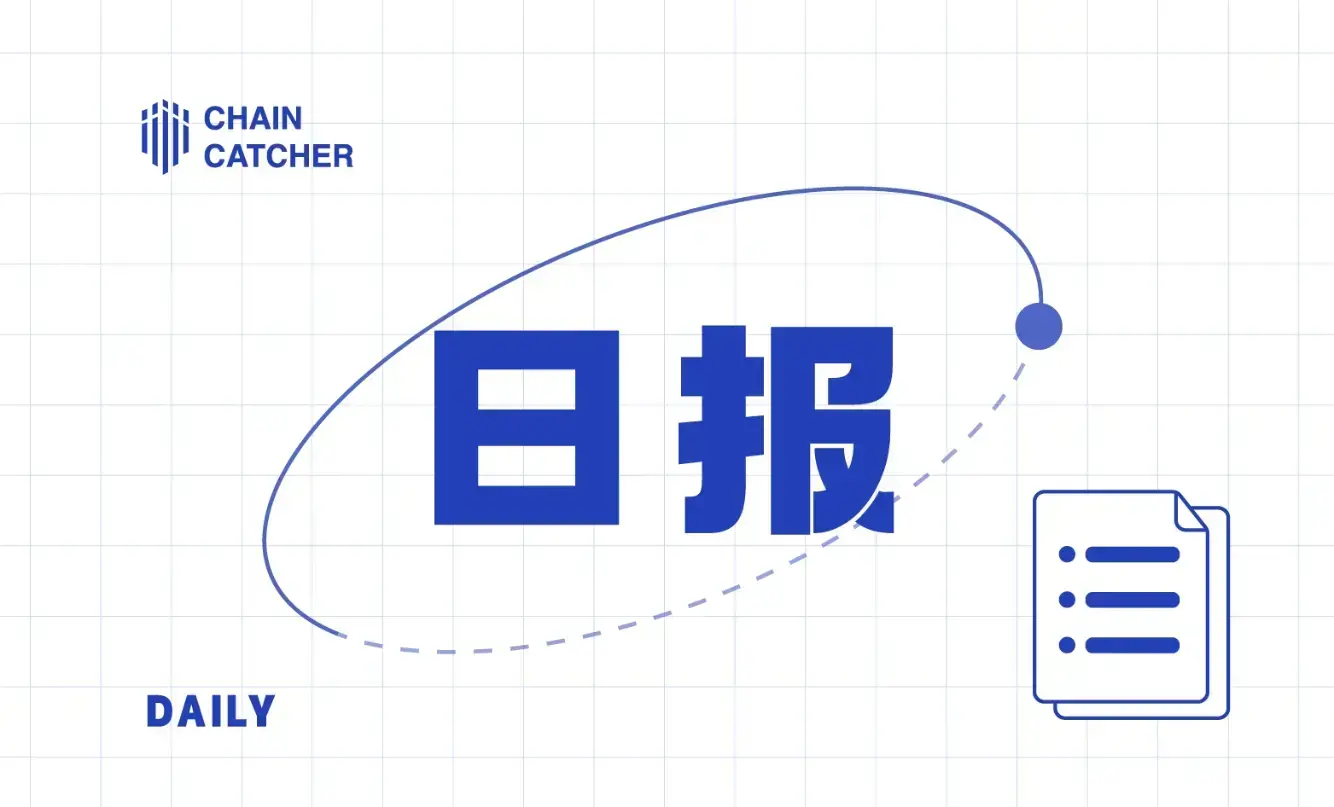After a drop of over 62% from its peak TVL, BSC plans to launch application sidechains and partitioned chains
Source: BSC Blog
Compiled by: Gu Yu, Chain Catcher
At the beginning of 2021, Binance launched BSC, which first experienced an explosion in its application ecosystem, with projects like PancakeSwap and Venus rapidly developing, marking the first shot in challenging Ethereum's dominance among EVM chains.
However, due to frequent hacker attacks, repeated congestion, long-standing concerns about centralization, and the impact of other public chains, BSC's total locked value has been in a downward trend since reaching a peak of $31.7 billion on June 10 last year. There have also been few new well-known projects appearing in the public eye. After a recent sharp decline, BSC's locked value fell to a low of $11.8 billion, equivalent to the level of early May last year.

On January 26, BSC also announced some of its achievements in an official blog post, such as processing over 2.34 billion transactions from 130 million active addresses within 16 months. Notably, on November 25, 2021, BSC set a historical record with 16.26 million transactions in a single day.
At the same time, BSC acknowledged some issues, such as network congestion and the difficulties faced by node operators in managing their full nodes to stay in sync with the latest blocks. To address this, BSC proposed corresponding solutions.
BSC stated that scalability will be the top priority in 2022. As BSC is the first blockchain to introduce a significantly large block size (100m gas limit), blockchain storage and the BSC client should incorporate more advanced logic to cover it and allow for further scaling. Currently, to fully sync the BSC blockchain, validators require substantial storage and time. To achieve a seamless BSC experience, the requirements for validators and node operators must be reduced.
To this end, new technologies such as Erigon are being validated to reduce time and storage requirements. BSC will collaborate with validators and infrastructure providers to deploy new solutions to address this issue, such as parallel EVM, better block processing channels, improved state caching, fast sync modes, and distributed nodes.
Another approach is to reduce operational burdens and enhance decentralization. More validators will join BSC's block production in 2022.
At the same time, BSC indicated that an important lesson learned from 2021 is that a single chain cannot cover all angles. During peak periods, BSC had over 2 million daily active users, with a single GameFi project reaching 1 million daily active users. This posed significant challenges to the network itself and its supporting infrastructure (such as RPC/API nodes).
For dApps with massive user bases, multi-chain and cross-chain solutions should be the answer, aligning with the multi-chain strategies of many other blockchains in the industry, such as ETH2.0, Polkadot, Cosmos, and Avalanche.
Therefore, BSC aims to achieve this by implementing new technologies and through the BSC Application Sidechain (BAS) and BSC Partition Chain (BPC) infrastructure layers.

Specifically, the BSC Application Sidechain (BAS) is an infrastructure designed to help developers and node operators build and run their own blockchains as their internal value systems, serving a large number of users while still maintaining close ties with BSC. Any project developer can deploy their own BAS using its unique specifications and validator set. This validator set can operate with fewer validators than BSC, depending on the BAS deployer. A typical use case for BAS is similar to the Ronin chain of Axie Infinity.
The BSC Partition Chain (BPC) will introduce another subspace with a new validator set, new computing engine, and new distributed ledger. Essentially, it acts as a "shard" or "Layer 2," transferring some data, computation, and transactions from the BSC mainnet to other smaller parallel blockchains. The deployment of BPC will reduce the amount of data stored by partitioning data across multiple BPC blockchains.
BSC also stated that multiple live and virtual events, hackathons, and workshops will be held in the coming weeks and months, including the BSC 2022 Hackathon in February and the BSC 2022 face-to-face summit in the first half of this year.









